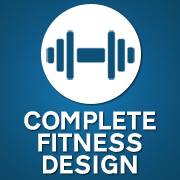Wondering How To Get A Tight Butt?
When you’ve been a personal trainer in Austin, or virtually anywhere, as long as I have, you tend to get a lot of questions from gym goers, clients, and just people you meet. They usually want your advice on how they can improve one or more aspects of their fitness routines, or perhaps they’re just seeking a little validation from a guy that has been in the industry a long time. In any case, men usually ask me how to get bigger arms, and women always seem to ask me how to get a tight butt.
How to get a tight butt is not a question I can universally answer, because like anything, it’s an individual thing. One thing is universal, however, and that is the musculature behind the shape that is involved. Those are known as the gluteal muscles. There are also hip flexor muscles and underlying muscles, such as the piriformis muscles, tfl’s, etc, etc, but the muscles needing the most work if you’re wondering how to get a tight butt, are the glutes.
Getting a tighter butt is easy for some, and problematic for others, because some folks have imbalances that will need to be addressed before they attempt to exercise and build strong, and fuller gluteal muscles. An example of one such imbalance would be a tight psoas muscle causing a rotation in the hips. If there is too much tightness throughout the hip flexor muscles, you are automatically quadricep dominant, and therefore, will not be activating your glutes maximally, no matter what the exercise, and how you perform it. These problems are remedied by what I call corrective flexibility. That’s a process that entails a combination of body work, and stretching homework. Sometimes a client will see me a few times to get the offending area loosened, then they will follow up on their own with a lot of stretching, as well as using tools of the trade such as massage tools, and even lacrosse balls.
When we have corrected the client’s imbalances, and they are a candidate for gluteal work, we can then begin solving the riddle of how to get a tight butt. Assuming there are no low back issues to contend with, and so on, we will begin with several exercises such as body weight squats, lunges, leg presses, abductor movements, etc. You want to begin very gently, and work your way up in poundages, as well as repetitions, so as to avoid injury.
Once you have a good routine going and you feel you have made a little progress, you’ll want to shift around some of the parameters of your routine. This will keep progress coming, as well as keep you coming to the gym as you won’t find it endlessly repetitious and mind numbingly boring to do the same routine all the time.
Nutrition and proper hydration are other areas to consider. If you have weight to lose, you can forget worrying about how to get a tight butt for the meantime, until you take some weight off. Cardiovascular exercise coupled with a proper nutrition plan will solve that problem. The other thing, as I mentioned, is to be sure to properly hydrate. Given the fact that your body is roughly 65 to 70% water, you will need to consume the proper amount of water every day, spaced out over the course of a day, naturally, as opposed to all at once, or you’re simply going to retain water weight. A water weighted body with excessive body fat may have a strong and muscular gluteal complex underneath, but it will never be seen or noticed until the weight is off.
Ready to Get Started?

Andy





